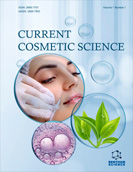Abstract
Aerogels, in recent times, have become materials of extensive research due to their fascinating capabilities in different fields. High porosity, large surface area, low thermal conductivity and low density make them significant in fields such as medicine, environmental engineering, food packaging, and so on. Biodegradability, low toxicity and biocompatibility, in addition to the aforementioned properties, offered by bio-based aerogels, especially polysaccharide based aerogels, give them a huge advantage over conventional inorganic ones. Polysaccharide based aerogels synthesised from starch, cellulose, pectin, alginate, chitosan, carrageenan and agarose precursors enable sustainable developments in the biomedical, cosmetic, electronic, construction and food industries. This review focuses on the biomedical applications of polysaccharide based aerogels, with special emphasis on its implications in drug delivery, tissue engineering, medical implantable devices, wound dressing, biosensors and bio-imaging. The future perspectives of these smart materials have also been subjected to discussion.
Keywords: Aerogels, polysaccharides, starch, cellulose, biomedical applications, chitosan, drug delivery
Graphical Abstract
[http://dx.doi.org/10.1007/978-1-4419-7589-8]
[http://dx.doi.org/10.1016/S0040-6090(96)09441-2]
[http://dx.doi.org/10.3390/polym13081347] [PMID: 33924110]
[http://dx.doi.org/10.1016/j.tifs.2013.10.003]
[http://dx.doi.org/10.1016/j.scitotenv.2021.150606] [PMID: 34592292]
[http://dx.doi.org/10.1007/s10934-022-01223-3]
[http://dx.doi.org/10.3390/biom12020232] [PMID: 35204733]
[http://dx.doi.org/10.1039/D2TA00708H]
[http://dx.doi.org/10.1016/j.carbpol.2022.119275] [PMID: 35337501]
[http://dx.doi.org/10.1016/j.carbpol.2019.115242] [PMID: 31582065]
[http://dx.doi.org/10.1039/D1GC03898B]
[http://dx.doi.org/10.1007/s11947-022-02829-w]
[PMID: 35156465]
[http://dx.doi.org/10.1080/10408398.2021.1875394] [PMID: 33511846]
[http://dx.doi.org/10.1016/j.susmat.2020.e00240]
[http://dx.doi.org/10.1016/j.carbpol.2021.118130] [PMID: 34044946]
[http://dx.doi.org/10.1016/j.indcrop.2021.114424]
[http://dx.doi.org/10.1080/1023666X.2018.1504471]
[http://dx.doi.org/10.1016/B978-0-12-821058-1.00010-1]
[http://dx.doi.org/10.3390/pharmaceutics14010145] [PMID: 35057041]
[http://dx.doi.org/10.1016/j.ccr.2021.214263]
[http://dx.doi.org/10.1016/j.ijbiomac.2019.10.037] [PMID: 31678101]
[http://dx.doi.org/10.3390/ma15031041] [PMID: 35160985]
[http://dx.doi.org/10.3390/molecules25143156] [PMID: 32664256]
[http://dx.doi.org/10.1016/j.ejps.2013.02.023] [PMID: 23500041]
[http://dx.doi.org/10.1016/j.supflu.2015.06.009]
[http://dx.doi.org/10.1016/j.jnoncrysol.2017.11.037]
[http://dx.doi.org/10.1016/j.supflu.2018.07.007]
[http://dx.doi.org/10.1002/app.40006]
[http://dx.doi.org/10.1016/j.ijbiomac.2018.06.147] [PMID: 30001596]
[http://dx.doi.org/10.1007/s10570-019-02445-6]
[http://dx.doi.org/10.1016/j.ijbiomac.2017.05.064] [PMID: 28526342]
[http://dx.doi.org/10.1039/C6RA27474A]
[http://dx.doi.org/10.1007/s10570-021-03734-9]
[http://dx.doi.org/10.1016/j.carbpol.2021.118784] [PMID: 34893219]
[http://dx.doi.org/10.3390/polym14081578] [PMID: 35458328]
[http://dx.doi.org/10.1098/rsif.2006.0124] [PMID: 16971328]
[http://dx.doi.org/10.3390/molecules24091815] [PMID: 31083427]
[http://dx.doi.org/10.1021/bm049380x] [PMID: 15762661]
[http://dx.doi.org/10.1021/bm5003976] [PMID: 24894125]
[http://dx.doi.org/10.1016/j.supflu.2019.104711]
[http://dx.doi.org/10.1134/S1990793119070224]
[http://dx.doi.org/10.1016/j.supflu.2015.05.010]
[http://dx.doi.org/10.1016/j.jmrt.2019.08.043]
[http://dx.doi.org/10.1016/j.supflu.2014.03.002]
[http://dx.doi.org/10.1016/j.carbpol.2016.04.064] [PMID: 27185139]
[http://dx.doi.org/10.1002/mame.201500048] [PMID: 26941565]
[http://dx.doi.org/10.1007/s10965-022-02902-0]
[http://dx.doi.org/10.1016/j.matchemphys.2022.126294]
[http://dx.doi.org/10.1016/j.carbpol.2018.10.012] [PMID: 30366534]
[http://dx.doi.org/10.1016/j.colsurfa.2017.10.067]
[http://dx.doi.org/10.1016/j.carbpol.2016.03.081] [PMID: 27112885]
[http://dx.doi.org/10.1016/j.jmbbm.2017.01.049] [PMID: 28171794]
[http://dx.doi.org/10.1007/s10570-016-1038-3]
[http://dx.doi.org/10.1016/j.compscitech.2014.01.020]
[http://dx.doi.org/10.1016/j.ijbiomac.2018.10.192] [PMID: 30385344]
[http://dx.doi.org/10.1016/j.ijbiomac.2020.05.011] [PMID: 32387606]
[http://dx.doi.org/10.1080/10717544.2022.2058650] [PMID: 35373683]
[http://dx.doi.org/10.1007/s10570-022-04630-6]
[http://dx.doi.org/10.1016/B978-0-12-804077-5.00014-2]
[http://dx.doi.org/10.1016/j.electacta.2014.01.066]
[http://dx.doi.org/10.1016/j.bios.2018.03.064] [PMID: 29625329]
[http://dx.doi.org/10.1063/1.4921039] [PMID: 26045728]
[http://dx.doi.org/10.1016/j.electacta.2020.136341]
[http://dx.doi.org/10.1016/j.ijbiomac.2019.01.001] [PMID: 30611809]
[http://dx.doi.org/10.1016/j.talanta.2020.121153] [PMID: 32797908]
[http://dx.doi.org/10.1016/j.mset.2019.10.002] [PMID: 33604529]
[http://dx.doi.org/10.1016/j.matchemphys.2018.06.003]
[http://dx.doi.org/10.1016/j.indcrop.2019.05.044]
[http://dx.doi.org/10.1007/s10570-016-0873-6]
[http://dx.doi.org/10.1016/j.aca.2017.04.018] [PMID: 28535886]
[http://dx.doi.org/10.1016/j.snb.2017.02.006]
[http://dx.doi.org/10.3390/bios12040187] [PMID: 35448247]
[http://dx.doi.org/10.1371/journal.pone.0066348] [PMID: 23799093]
[http://dx.doi.org/10.1039/C4CC02983F] [PMID: 25009835]
[http://dx.doi.org/10.1021/acs.bioconjchem.5b00048] [PMID: 25730280]
[http://dx.doi.org/10.1021/ja076196l] [PMID: 17949004]
[http://dx.doi.org/10.1021/acs.biomac.7b00306] [PMID: 28530806]
[http://dx.doi.org/10.1016/j.actbio.2018.09.034] [PMID: 30261339]
[http://dx.doi.org/10.1002/cplu.201900746] [PMID: 32187845]
[http://dx.doi.org/10.1021/acs.biomac.5b00805] [PMID: 26226200]
[http://dx.doi.org/10.1016/j.biomaterials.2005.02.002] [PMID: 15860204]
[http://dx.doi.org/10.1039/9781782629979]
[http://dx.doi.org/10.1016/j.cis.2016.05.011] [PMID: 27321857]
[http://dx.doi.org/10.2147/IJN.S238005] [PMID: 32308388]
[http://dx.doi.org/10.3390/molecules25225286] [PMID: 33202707]












